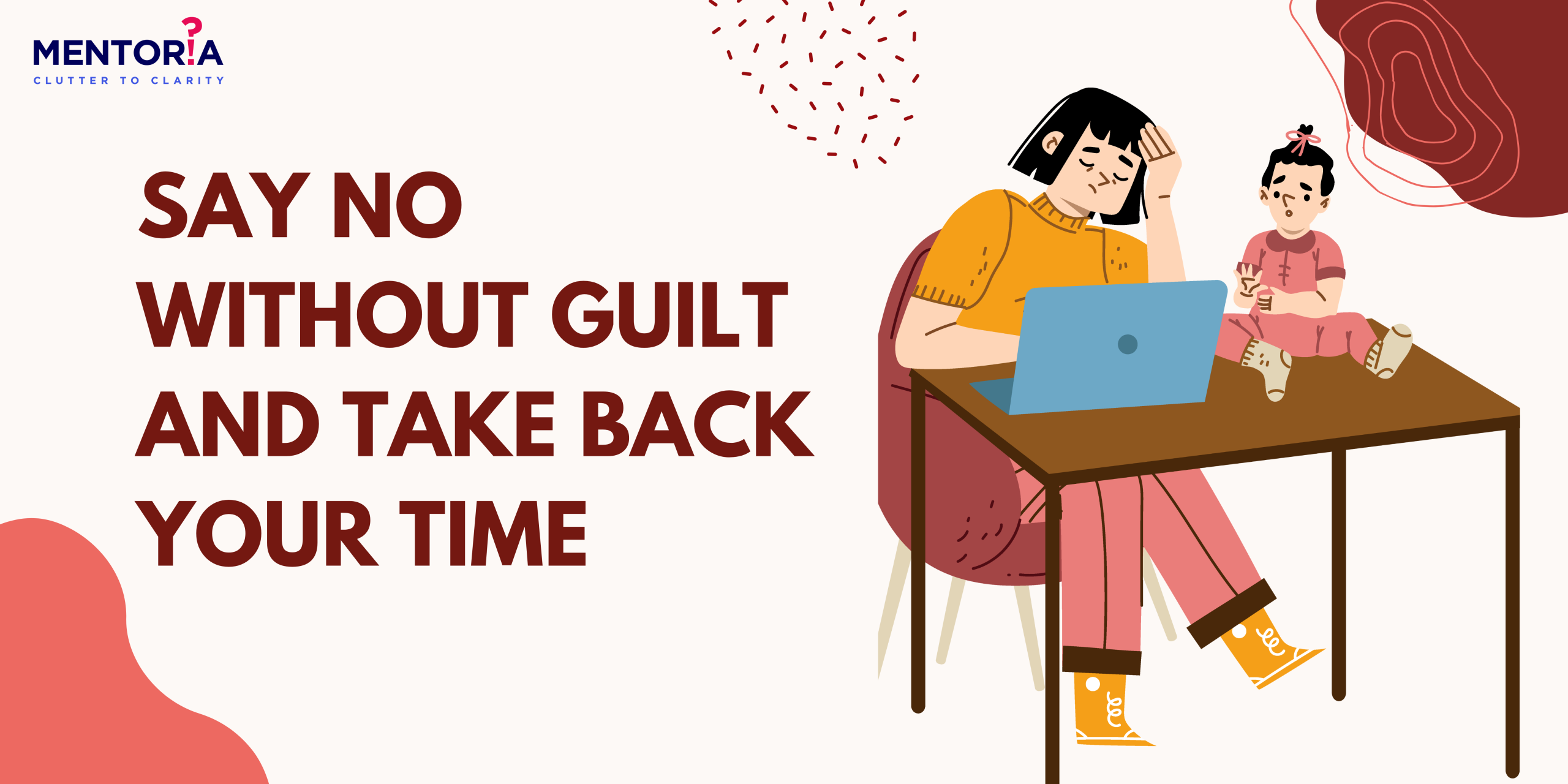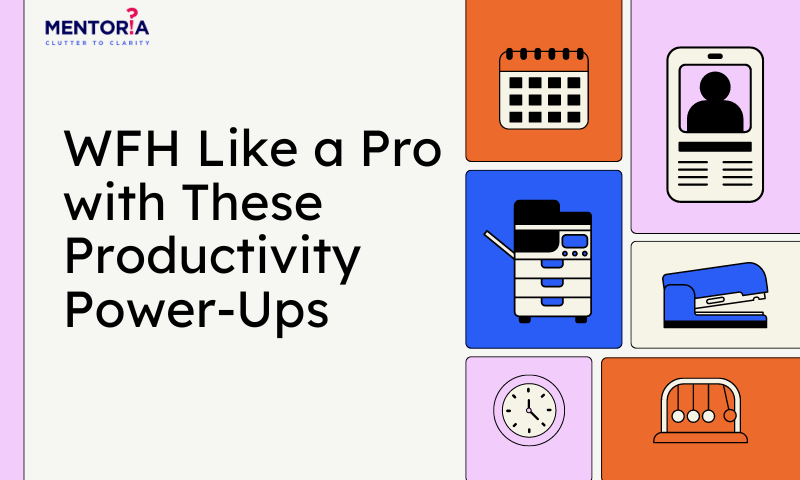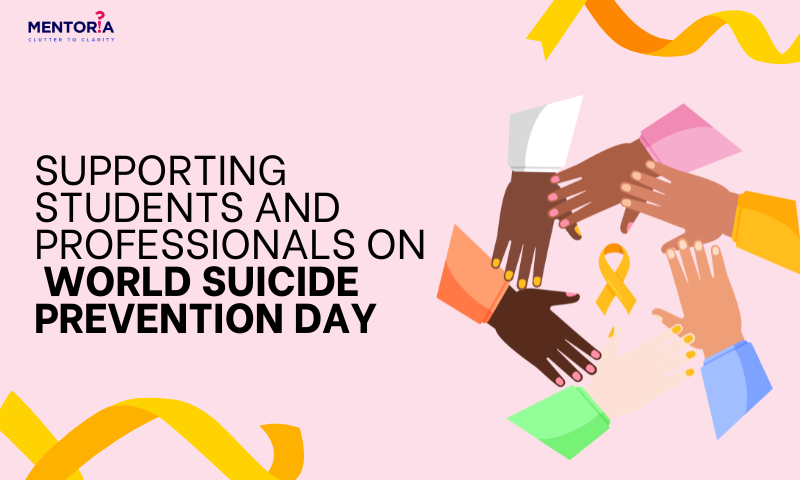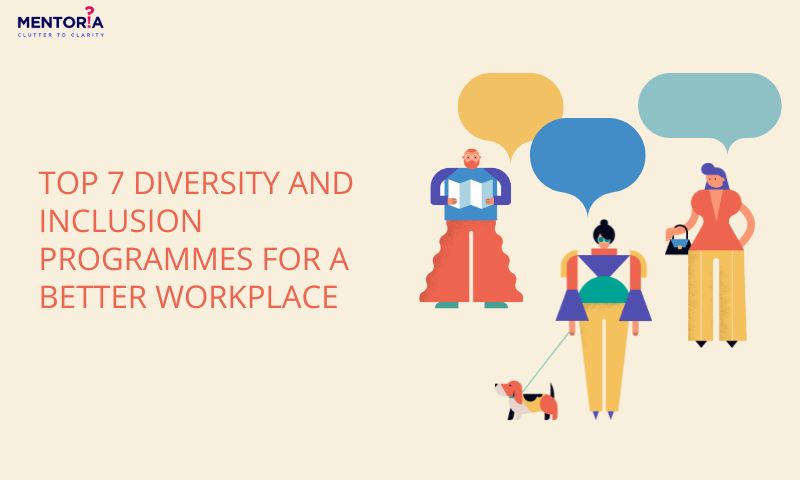8 Phrases To Cultivate A Culture Of Inquiry In The Workplace
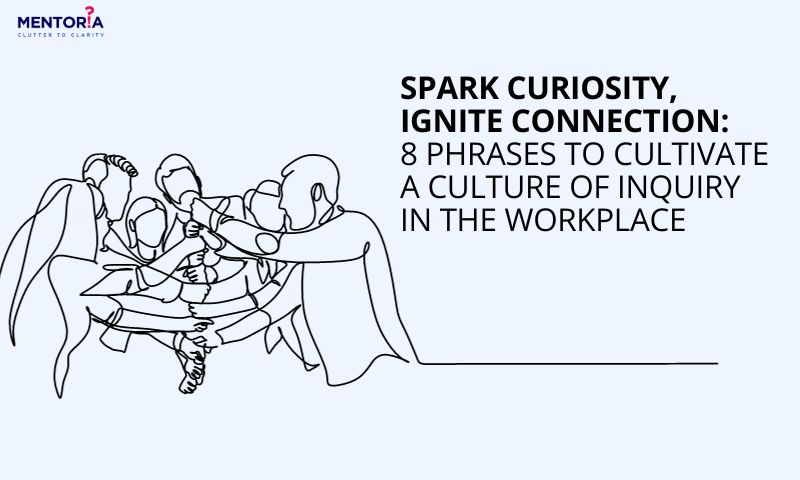
Building a culture of curiosity is a proven strategy for enhancing team dynamics, promoting innovation, and nurturing individual well-being. In this blog, we’re unlocking the secrets to building a workplace that’s not just about getting the job done but creating a culture of curiosity. We’re diving into eight game-changing phrases that can turn your office into a hub of connection and continuous learning. We’ll guide you through practical steps to boost curiosity, improve processes, and create a workplace where every voice matters and curiosity is a daily practice that shapes a vibrant and thriving workplace culture.
“I Don’t Know.”
Imagine a workplace where the phrase “I don’t know” isn’t a stumbling block but a stepping stone. According to HBR, intellectual humility, recognising the potential fallibility of our beliefs, fosters a culture of open-mindedness. Leaders who embrace this phrase are not perceived as lacking competence; in fact, they’re seen as more competent and approachable. It’s an admission that no one has all the answers, a catalyst for collaborative learning. Following it up with, “But how might we learn more?” transforms uncertainty into an opportunity for shared exploration. This phrase not only strengthens the team’s problem-solving abilities but also acts as a shield against workplace anxiety, promoting happiness and overall life satisfaction.
- Encourage a Growth Mindset: Foster an environment where admitting uncertainty is seen as a step towards growth. Emphasise that learning is an ongoing process, and everyone, including leaders, is continually evolving.
- Promote Collaborative Learning: When someone says, “I don’t know,” follow up with collaborative learning strategies. Encourage team members to share their insights and collectively explore resources or methods to find answers, fostering a culture of shared knowledge.
- Highlight the Value of Open-Mindedness: Reinforce that intellectual humility is a strength, not a weakness. Share success stories where admitting not knowing led to innovative solutions or collaborative breakthroughs, demonstrating the power of an open mind.
- Link “I don’t know” to Action: It’s not just about acknowledging a knowledge gap; it’s about turning it into a positive action. Follow up with questions like “How might we learn more together?” to instil a proactive approach toward shared learning.
“Tell Me More.”
In workplace relationships, responding with “Tell me more” is the thread that weaves tighter connections. Just as in personal relationships, acknowledging bids for attention in the professional atmosphere is essential. When team members share snippets of their experiences or challenges, responding with genuine curiosity deepens understanding. It’s not just about maintaining positive relationships; it’s about creating an environment that, according to research, curtails burnout and fuels creativity. This simple phrase unlocks a treasure trove of insights, fostering an atmosphere where every voice is heard and valued.
- Active Listening Training: Encourage team members to undergo active listening training. This not only enhances communication skills but also ensures that when someone says, “Tell me more,” they are genuinely engaged in understanding the other person’s perspective.
- Create a Culture of Sharing: Establish platforms or regular meetings where team members are encouraged to share their experiences, insights, and challenges. This provides ample opportunities for the “Tell me more” dialogue to thrive.
- Acknowledge and Build on Contributions: When someone does share more, acknowledge their input and build on it. This creates a positive feedback loop, encouraging more team members to open up and share additional details.
- Regular Check-Ins: Incorporate regular check-ins where team members can discuss ongoing projects or personal experiences. This provides a structured space for the “Tell me more” conversation to naturally unfold.
“I Understand That You’re More Than Your Job.”
Beyond the confines of job descriptions, employees lead complex lives. Acknowledging this complexity is the key to addressing work-life conflicts. The phrase “I understand that you’re more than your job” is an acknowledgment that personal lives matter. It transcends the professional realm and acknowledges the impact of personal challenges on work. Recognising these external factors doesn’t just strengthen professional relationships but also contributes to enhanced productivity, according to research. It’s a reminder that understanding the holistic picture leads to a more supportive and resilient workplace.
- Introduce Personal Development Plans: Encourage team members to create personal development plans, allowing them to share their broader life goals and challenges. This provides leaders with insights into each individual’s holistic well-being.
- Regular One-on-One Conversations: Schedule periodic one-on-one conversations focused on both professional and personal aspects. This allows leaders to connect with team members on a deeper level, fostering an understanding that transcends job responsibilities.
- Flexible Work Policies: Implement flexible work policies that accommodate the diverse needs of employees. Acknowledge that personal lives impact professional performance and provide options that promote a healthy work-life balance.
- Training on Empathy: Conduct training sessions on empathy to equip leaders with the skills to understand and respond to the personal challenges faced by team members. This reinforces the message that employees are valued beyond their roles.
“Who Else?”
In a world that often prioritises titles over insights, the phrase “Who else?” is a call for diversity in perspectives. It challenges the assumption that only certain roles hold valuable insights. Pixar’s realisation that brilliance can come from unexpected corners highlights the power of embracing this curiosity. It’s about expanding the circle of voices contributing to discussions. By asking “Who else might have unique insights or solutions?” leaders tap into a wealth of perspectives, fostering a culture that goes beyond homogenous groupthink. This phrase isn’t just about inclusivity; it’s a strategic move to uncover brilliance where it might be least expected.
- Diverse Task Forces: Form task forces or project teams with diverse members, intentionally including individuals from different departments or roles. This challenges the assumption that only certain roles hold valuable insights and encourages a broader range of perspectives.
- Cross-Departmental Collaboration Events: Organise events or workshops that promote cross-departmental collaboration. This creates opportunities for individuals who wouldn’t typically interact to share insights and contribute to discussions.
- Anonymous Suggestion Platforms: Implement platforms or channels where employees can anonymously suggest ideas or solutions. This provides an avenue for those who may not typically speak up to contribute valuable insights without fear of judgement.
- Rotate Meeting Facilitators: Rotate the facilitator role for meetings, giving different team members a chance to lead discussions. This not only empowers individuals who might not usually take the lead but also introduces varied perspectives into decision-making processes.
“What If?”
Introducing a dose of possibility into everyday conversations, “What if?” is the ignition switch for creative exploration. It’s an invitation to dream beyond the confines of the present and consider alternative realities. This simple phrase transforms discussions from focusing solely on what is to exploring what could be. “What if we tried a different approach?” or “What if we aimed higher?” – these questions propel teams into a realm of innovative thinking. It’s a powerful tool for cultivating a culture that embraces change and views challenges not as obstacles but as opportunities for growth.
- Scenario-Based Workshops: Conduct scenario-based workshops where teams explore “What if?” questions related to potential challenges or opportunities. This fosters a habit of considering alternative possibilities and solutions.
- Brainstorming Sessions: Integrate regular brainstorming sessions into team meetings where “What if?” questions are posed. Encourage free-flowing idea generation without immediate judgement, creating an environment that nurtures creativity.
- Future-Focused Goal Setting: During goal-setting sessions, incorporate discussions about future possibilities. Ask team members to articulate their aspirations and consider different paths toward achieving those goals, sparking a sense of curiosity about potential avenues.
- Reflective Exercises: Implement reflective exercises where team members consider the impact of different decisions or strategies. This prompts individuals to think beyond the immediate situation, cultivating a habit of contemplating potential outcomes.
“How Can We Improve This Process?”
At the heart of continuous improvement lies the question, “How can we improve this process?” This phrase goes beyond seeking perfection; it instils a growth mindset in the team. It’s an invitation to reflect on the journey of improvement rather than fixating solely on the end result. Encouraging the team to actively participate in the process of making things better fosters a culture of collaboration. It’s not just about addressing shortcomings; it’s about collectively embracing the belief that there’s always room for enhancement.
- Continuous Feedback Loops: Establish continuous feedback mechanisms for ongoing projects or processes. Encourage team members to provide regular feedback on what is working well and where improvements can be made.
- Post-Implementation Reviews: Conduct post-implementation reviews for completed projects. Use these sessions to not only evaluate outcomes but also to discuss how the process could have been more efficient or effective, fostering a culture of continuous improvement.
- Cross-Departmental Process Audits: Periodically audit processes with a cross-departmental team. This not only identifies areas for improvement but also ensures that insights from various perspectives are considered in refining existing processes.
- Training on Process Optimisation: Provide training on process optimisation techniques. Equip team members with the skills to critically assess workflows and identify opportunities for enhancement, turning the question “How can we improve this process?” into an ongoing practice.
“Let’s Learn From Our Mistakes.”
Mistakes aren’t dead ends but stepping stones to growth. “Let’s learn from our mistakes” communicates resilience and a commitment to continuous learning. It transforms errors from sources of shame into opportunities for improvement. Embracing this phrase signals that failure is not only accepted but viewed as a natural part of the journey toward success. It’s a declaration that the workplace values a culture where experimentation is encouraged, and lessons from missteps are celebrated. Research shows that managers are seen as more communal and friendly when they recognise their beliefs might be wrong.
- Post-Mortem Discussions: After a project concludes, hold post-mortem discussions where team members openly discuss what went wrong and why. Emphasise that the focus is on learning and improvement rather than assigning blame.
- Celebrate Iterative Progress: Foster a culture that celebrates iterative progress. Acknowledge that mistakes are natural steps in the journey toward success and that each misstep is an opportunity to refine strategies and approaches.
- Learning Journals: Encourage team members to maintain learning journals. In these journals, they can document mistakes, challenges, and the lessons learned. This not only promotes individual growth but also contributes to a collective culture of continuous learning.
- Failure-Tolerant Environments: Establish environments where failure is tolerated, provided it is accompanied by a commitment to learning and improvement. This reduces the fear of making mistakes, encouraging innovative thinking and experimentation.
“What Are Your Thoughts On This?”
Amidst the diversity of perspectives, “What are your thoughts on this?” stands as an open invitation. It’s a recognition that everyone’s viewpoint is valuable. Instead of presenting solutions upfront, this phrase empowers team members to contribute their unique insights. It fosters a culture where active participation is encouraged, and diverse viewpoints are not just tolerated but celebrated. By asking for thoughts before solutions, leaders tap into the collective wisdom of the team. It’s a powerful way to ensure that decisions are well-rounded, considering perspectives that might otherwise be overlooked.
- Structured Idea Sharing Sessions: Incorporate structured idea-sharing sessions into team meetings. Allocate time for team members to express their thoughts on ongoing projects, challenges, or new initiatives, promoting a culture of active participation.
- Diversity and Inclusion Training: Conduct training sessions on diversity and inclusion to emphasise the importance of valuing diverse perspectives. This creates an environment where everyone feels empowered to share their thoughts without fear of bias.
- Anonymous Feedback Channels: Implement anonymous feedback channels where team members can share their thoughts without revealing their identities. This ensures that individuals who may be hesitant to speak up in person still have a platform to contribute.
- Leadership Modelling: Leaders should consistently share their own thoughts before presenting solutions. By modelling the behaviour of seeking input before making decisions, they set a precedent for a collaborative and inclusive decision-making process.
Cultivating Curiosity As A Team
These eight phrases aren’t just tools in your leadership kit; they’re catalysts for a curious culture. As you weave them into your daily interactions, remember, curiosity is contagious. The more you practise it, the more likely your team will follow suit. It’s not just about building a culture of curiosity; it’s about fostering a workplace where every team member feels seen, heard, and valued.
We’re here to provide you with all the help! Kick-start your journey with Mentoria and discover the right fit for you. Dive into Mentoria’s corporate and business workshops and get tailored guidance. We’ve got your back in navigating the twists and turns of the corporate landscape. Give us a ring, chat with our career mentors, and let’s find the perfect plan for you!




